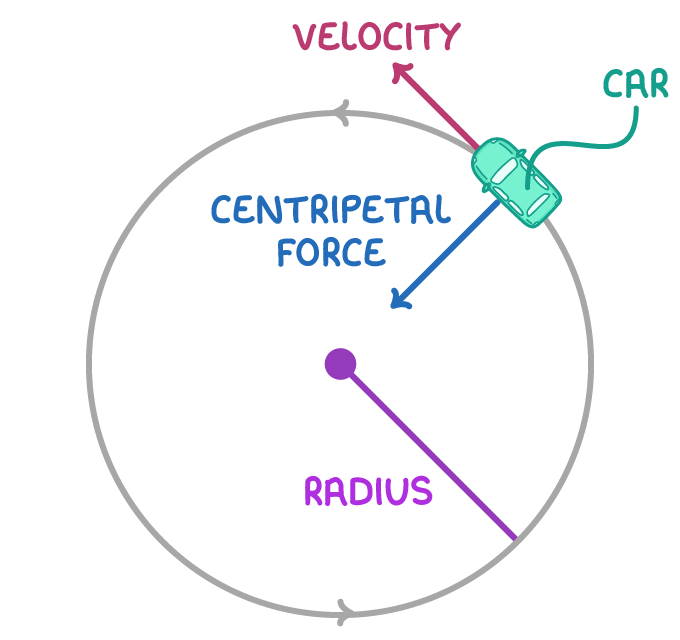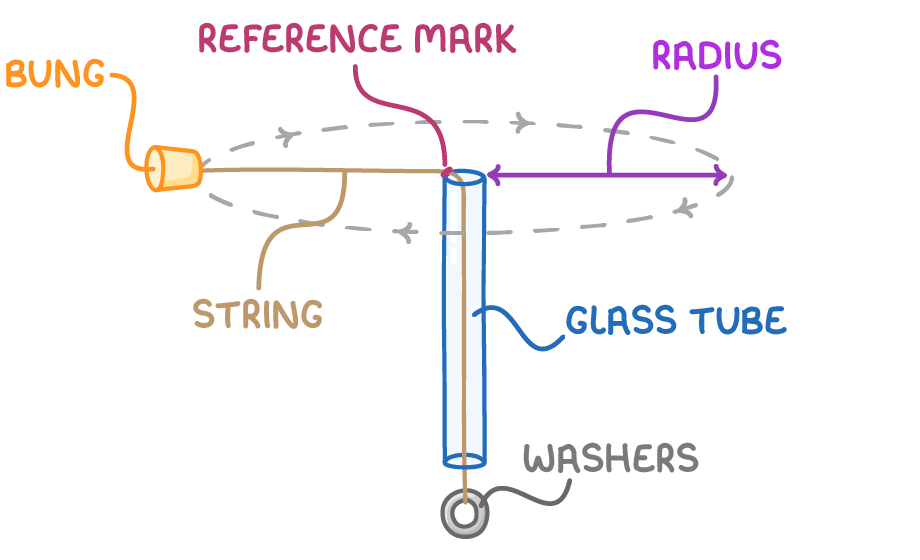Centripetal Force & Acceleration
This lesson covers:
- Understanding how objects moving in circular paths have changing velocity vectors
- Defining centripetal acceleration and the methods used to calculate it
- Explaining centripetal forces and their role in producing circular motion
- An experiment to explore centripetal motion using a whirling bung
Circular motion involves changing velocity
When an object moves along a circular path at a constant speed, its velocity vector changes direction continuously.
Acceleration is defined as the rate of change in velocity. Therefore, even if the speed remains constant in circular motion, the object accelerates because the direction of its velocity changes.
This acceleration, which is always directed towards the centre of the circle, is known as centripetal acceleration (ac).
Calculating centripetal acceleration
To calculate centripetal acceleration, you can use two fundamental equations:
ac = rv2
AND
ac = ω2 r
Where:
- ac = centripetal acceleration (measured in metres per second squared, m s-2)
- v = linear velocity (m s-1)
- ω = angular velocity (rad s-1)
- r = radius of the circular path (m)
Worked example - Calculating centripetal acceleration
Calculate the centripetal acceleration for a car moving at 20 m s-1 around a circular track with a radius of 50 metres.
Step 1: Formula
ac = rv2
Step 2: Substitution and correct evaluation
ac=50202 = 40 m s−2
Centripetal forces cause circular motion

According to Newton's first law, any accelerating object must experience a net force.
The net force that causes circular motion is called the centripetal force (Fc). This force always points towards the centre of the circle.
Using the formula F = ma, we derive the equations for centripetal force:
Fc = rm v2
AND
Fc = m ω2 r
Where:
- Fc = centripetal force (N)
- m = mass (kg)
- v = linear velocity (m s-1)
- r = radius (m)
- ω = angular velocity (rad s-1)
Investigating centripetal motion
We can experimentally study circular motion using a whirling bung setup:

Method:
- Attach some washers to a rubber bung tied to a string, which is threaded through a glass tube.
- Spin the bung horizontally while keeping a reference mark on the string at the top of the tube.
- Time how long it takes for the bung to complete several revolutions to calculate the angular velocity.
- Calculate the centripetal force using the weight of the washers.
- Repeat the experiment with different string lengths (radii).
Increasing the radius leads to longer revolution times while maintaining the same centripetal force.
This experiment demonstrates how the tension force in the string acts as the centripetal force, enabling circular motion.